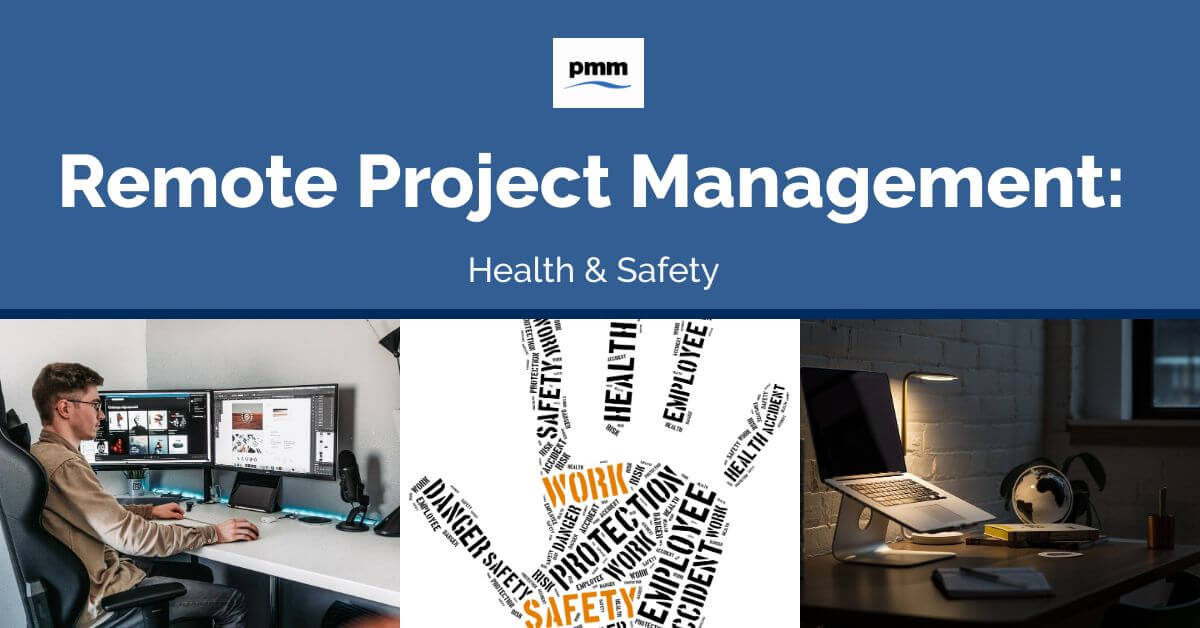Having a remote team working on your project, whether fully or partially, presents its own challenges. A key consideration when managing a project remotely is health and safety.
Although you’re not going to be directly providing the work premises for your team, an employer is still responsible for health and safety. In countries like the UK, this is a legal requirement. Even if your jurisdiction doesn’t have a legal requirement to monitor the health and safety of your remote workers, it’s still a moral consideration.
Here, we’ll explore:
- The underlying principles of health and safety for remote workers
- How to make an assessment of a workstation for a remote worker
- Ways to monitor the measures you’re taking
Enabling you to be confident you’re being a responsible manager for your team.
Health and safety for remote workers
UK-based employers are still responsible for normal health and safety measures, even if their staff work from home. If the period of remote work is only short-term there is no increased risk. For longer term or permanent working from home arrangements, proper assessments need to be carried out.
Most at-home working is computer based. This means the primary consideration for health and safety is going to be the use of display screen equipment (DSE).
There are other considerations, such as if your team are taking the correct breaks and only working the allowed hours and shift patterns as laid out under the Working Time Directive. Check your local requirements if you’re not UK-based.
One of the biggest concerns noted by remote workers is feeling like they’re missing out when not in the office. This can have an impact on mental health. It’s important to check in on your team to assess their stress levels and that they’re managing their workload.
Providing a safe environment
When it comes to health and safety, having an appropriate workspace is one of the biggest concerns for a manager. If your team is geographically spread out, you probably aren’t able to carry out a desk assessment directly.
You can ask your team member to do this for themselves and raise any issues with you. If they choose to use a co-working space, café, etc then they’ll need to make a brief assessment each time.
Things that need to be considered include:
- Keyboard – it needs to be detached from the screen unless portability is necessary – so a USB keyboard for a laptop in a home office would work – it needs to tilt, and be comfortable for the user
- Mouse or trackball – it has to be suitable for the user and able to be placed in a comfortable position that doesn’t strain wrists
- Displays – the screen needs to be readable, without jitters or glare, have adjustable brightness and contrast, and be adjustable for tilt and angle
- Furniture – there needs to be enough space for everything your colleague needs, a chair that offers the right support, glare-free surfaces, and the ability to get the right posture
- Environment – airflow, lighting, noise, and temperature all need to be comfortable for your team member
Electrical testing
If you’re providing the hardware for your remote team then it’s your responsibility to have it tested for electrical safety. Again, this is a legal requirement within the UK so you should check your local labour laws. Even if it’s not the law, it’s good practice to show your team you care about their safety.
Monitoring remote workers
One of the key principles of remote work is that you trust your team to complete their tasks. Although having workflow managers in place to check the work is being done is helpful, having a timer or key-stroke logger for your team to use can be counterproductive; without trust they will last motivation.
At the same time, you need to ensure everyone is taking the right breaks and coping with their work. Work with your team to decide an appropriate monitoring system so you know they’re not risking burnout.
Regular communication is key. Checking on your colleagues’ mental health is important, as is having employee assistance systems, such as helplines, in place. You can also use the regular contact to monitor things their workspace and that their hardware and software is meeting their needs, too.
Conclusion
Having your team working from home doesn’t absolve you from health and safety obligations. When managing a remote project, health and safety must be looked at differently but still considered. You can ask your team to complete their own desk assessment, but your company will need to meet costs of reasonable adjustments. Any electrical kit you supply still needs to go through regular testing, too. As with many elements of managing a remote team, health and safety can easily be adapted with some creative thinking.






